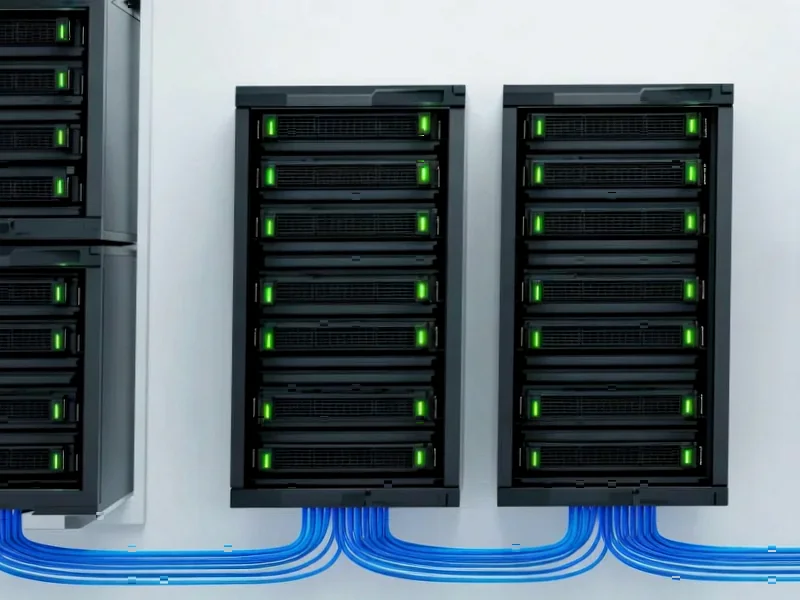According to Guru3D.com, SAPPHIRE Technology has officially launched its EDGE AI Series mini PCs powered by AMD’s latest Ryzen AI 300 Series processors, featuring models with Ryzen AI 9 HX 370, AI 7 350, and AI 5 340 chips. These ultra-compact systems measure just 117 × 111 × 30 mm but pack dedicated Neural Processing Units capable of up to 50 trillion operations per second, enabling real-time AI tasks like object detection and voice recognition without cloud processing. The barebone kits support DDR5 memory up to 96GB, multiple M.2 NVMe slots, 2.5 Gb Ethernet, and extensive connectivity including USB4 and HDMI 2.1 outputs. All models are Copilot+ PC ready and designed for both Windows and Linux operating systems, targeting applications from classrooms to industrial automation. This marks Sapphire’s strategic expansion beyond graphics cards into the competitive mini PC space.
The Business Case for AI Mini PCs
Sapphire’s move represents a calculated diversification strategy as the company expands beyond its traditional graphics card business into higher-margin system integration. The timing is strategic – the edge AI computing market is projected to reach $50 billion by 2027, growing at over 20% annually according to industry analysts. By launching these systems as barebone kits, Sapphire minimizes inventory risk while creating multiple revenue streams: hardware margins from the base units, potential upsell opportunities for accessories, and ecosystem partnerships with memory and storage manufacturers. This approach mirrors successful strategies from companies like Intel NUC and ASUS, but with a distinct focus on AI capabilities that differentiate Sapphire in a crowded market.
Where Sapphire Fits in the AI Hardware Wars
The EDGE AI Series positions Sapphire directly against established players like Intel’s NUC lineup and emerging competitors from Chinese manufacturers. However, Sapphire’s differentiation lies in leveraging its longstanding AMD partnership to deliver systems with superior AI performance per watt. The 50 TOPS NPU performance significantly exceeds Microsoft’s Copilot+ PC requirements of 40 TOPS, giving these systems immediate compatibility with upcoming Windows AI features. More importantly, by targeting the $800-$1,500 price segment typically occupied by business desktop replacements, Sapphire can capture margin that’s increasingly difficult to maintain in the graphics card market, where competition has driven prices down and made consumer sales more volatile.
The Enterprise Economics Driving Adoption
For business customers, the economic calculus is compelling. A single EDGE AI unit replacing traditional desktop workstations can reduce power consumption by 40-60% while eliminating the need for expensive cloud AI inference services. At scale, this creates significant operational savings – a 500-unit deployment could save an enterprise over $100,000 annually in electricity costs alone. The local AI processing capability addresses growing privacy concerns as regulations like GDPR and CCPA make cloud-based AI processing increasingly problematic for sensitive data. Industries like healthcare and finance, where data sovereignty is critical, represent particularly lucrative target markets for Sapphire’s approach.
Manufacturing and Supply Chain Strategy
Sapphire’s manufacturing expertise from decades of graphics card production gives them distinct advantages in component sourcing and quality control. The company can leverage existing relationships with memory and storage suppliers to secure favorable pricing, while their global distribution network provides immediate market access that would take newcomers years to build. The tool-less chassis design isn’t just a user convenience – it significantly reduces manufacturing complexity and costs compared to systems requiring specialized assembly tools. This operational efficiency could give Sapphire 15-20% better margins than competitors building similar systems from scratch.
Beyond Hardware: The Services Opportunity
The most strategic aspect of this launch may be the platform it creates for future revenue streams. As these systems gain enterprise adoption, Sapphire can develop managed services, AI model optimization tools, and vertical-specific software solutions. The Copilot+ PC readiness creates natural partnerships with Microsoft, while the Linux support opens doors to government and research institutions requiring open-source platforms. This positions Sapphire to capture value throughout the AI deployment lifecycle rather than just the initial hardware sale – a crucial evolution as hardware margins inevitably compress over time.




